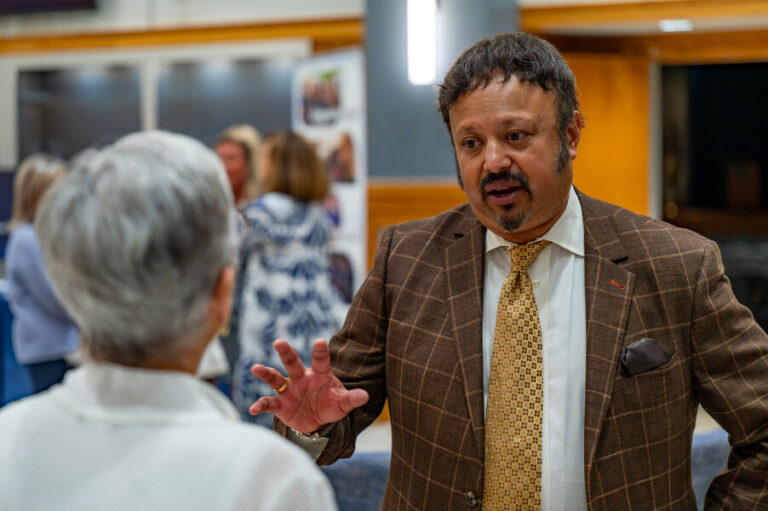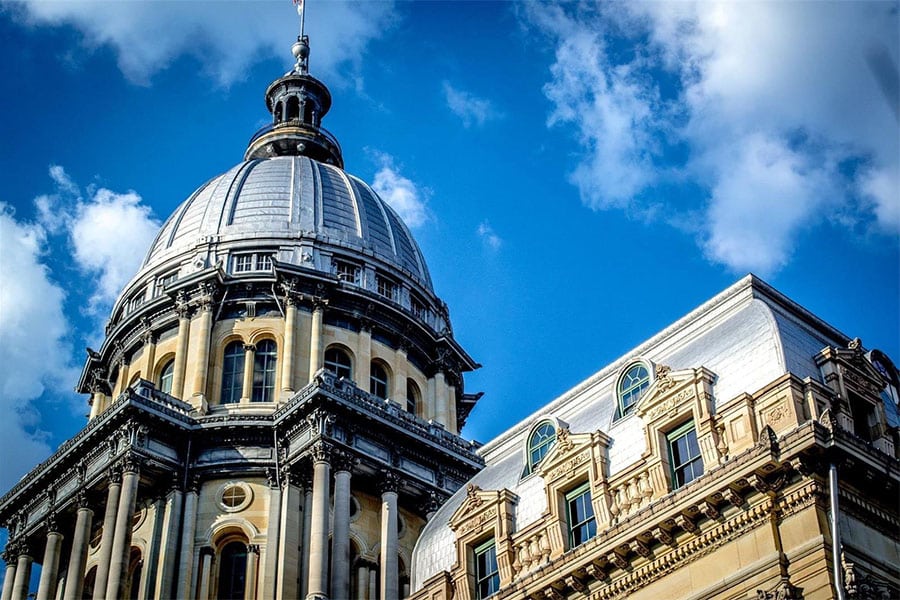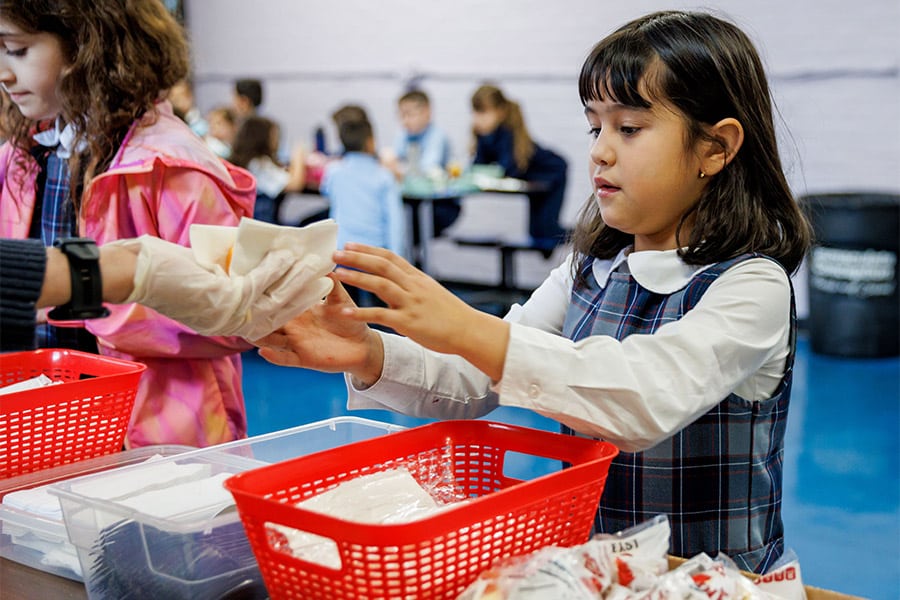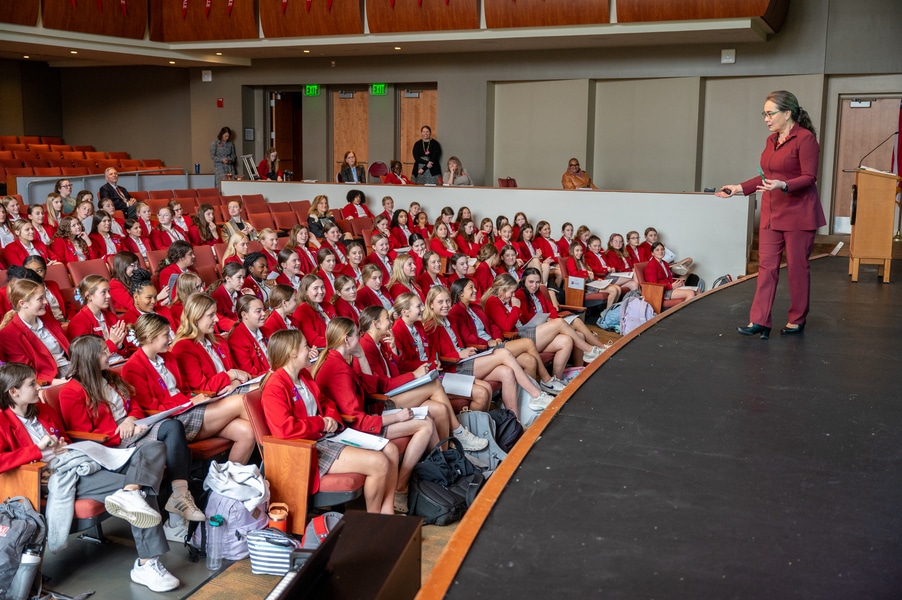Is Catholic education special?
Eileen D’Andrea always thought it was, and she was thrilled after listening to Anirban Basu, chairman and CEO of Sage Policy Group, speak on the value of Catholic education during a Sept. 10 presentation that attracted about 100 people to Notre Dame Preparatory School in Towson.
“I thought it was so helpful to hear what I always felt,” D’Andrea said. “And that it is backed up by statistics.”
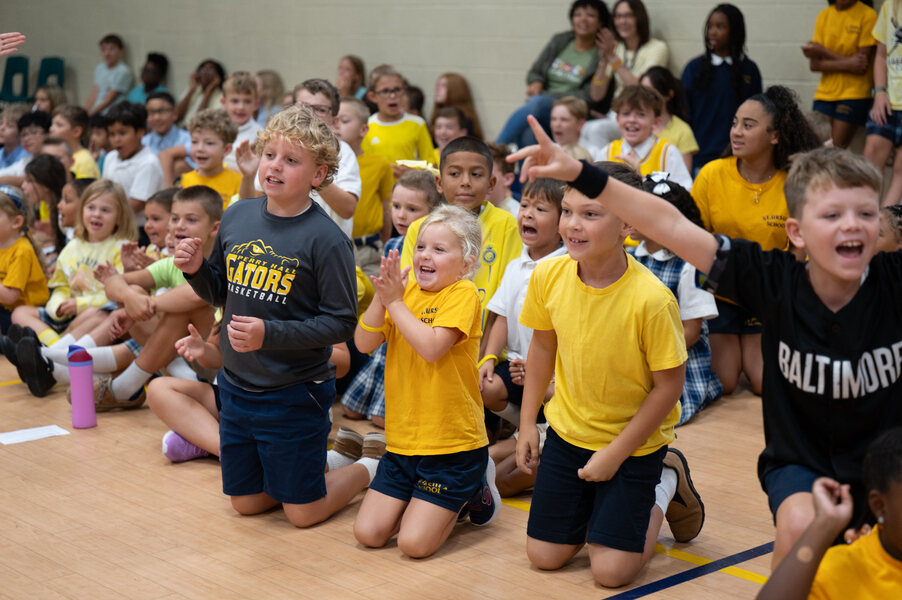
According to the National Catholic Educational Association, Catholic schools in the United States had a 98.9 percent graduation rate last academic year. That compares to 86 percent for public schools, 98.2 percent for other religious schools and 90 percent for non-sectarian schools.
The percentage of high school graduates who attend a four-year college is 85.2 percent among Catholic schools, 43 percent among public schools, 63.7 percent for other religious schools and 55.6 percent for non-sectarian schools.
The NCEA estimates that Catholic schools provide $24.3 billion in savings each year for the nation.
“I am not a Catholic,” Basu admitted upfront to the crowd. “I’m not saying every day is perfect in Catholic schools, but when the goal is to develop the entire person … that’s why it is a superior outcome.”
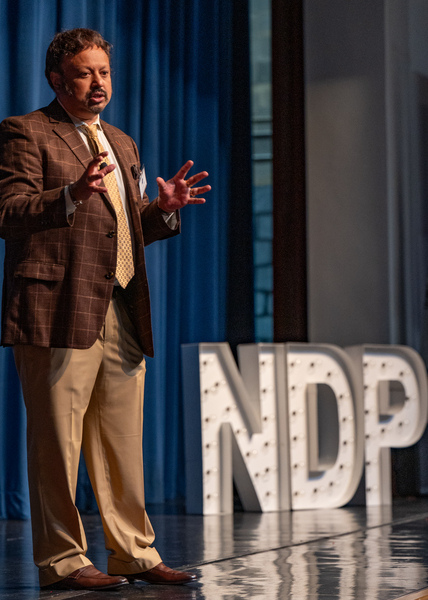
Basu noted that students in Catholic schools are much more likely to graduate from high school and go to college. While trade schools are becoming popular, people with a four-year degree on average earn more, Basu said, which allows them to spend more.
Public schools, he said, have many challenges, including constant assessments, various testing requirements and behavioral issues. Public education is also “very political and it is difficult to figure out what to do,” he said.
“Maryland spends a phenomenal amount on public education,” Basu said. “A lot of that money doesn’t make it to the classroom.”
The administration in Catholic schools, he said, had to become efficient when enrollment started falling several years ago. The Archdiocese of Baltimore was “thoughtful, mindful and made the numbers work,” he said, by closing schools and stabilizing enrollment.
“It is hard to compete with free (public schools),” he said. “The rate of return of a Catholic education is very, very high.”
Archdiocese of Baltimore student achievement highlights
- 99.9 percent high school graduation rate
- More than 97 percent matriculation to college or military service
- Educational costs in Maryland compared
- $19,820 Maryland’s average cost per student in public school classrooms
- $8,762 Catholic schools average elementary/middle school cost per student
- $16,826 – Catholic high schools’ average cost per student
- 7,475 families apply for financial aid (2023-24 school year)
- $2,502,638 archdiocesan financial aid awarded (2023-24 school year)
Source: Archdiocese of Baltimore
Read More Schools
Copyright © 2024 Catholic Review Media

